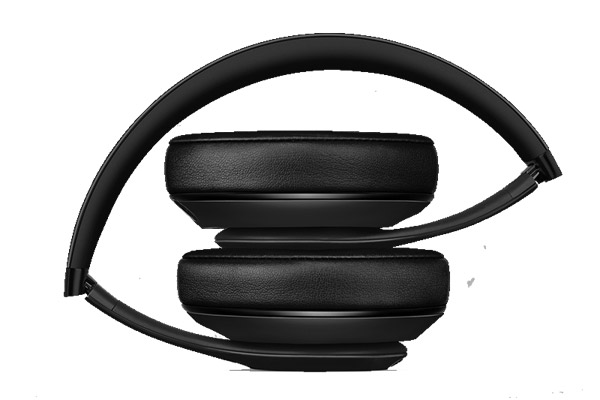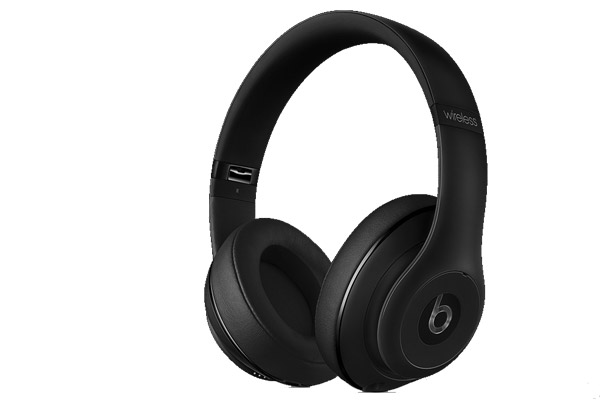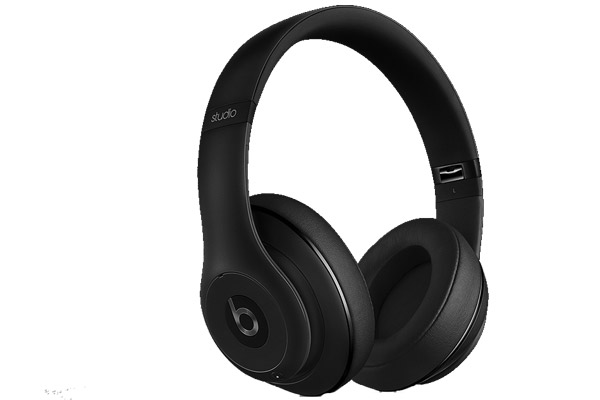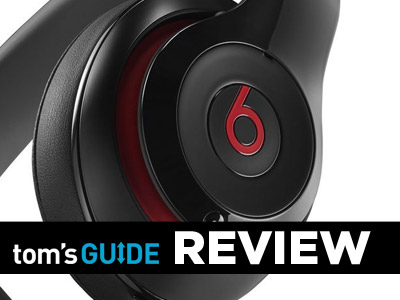Tom's Guide Verdict
Beats By Dre’'s latest Studio active noise-cancelling headphones offers some much-appreciated improvements, making it a good investment for bass lovers.
Pros
- +
Strong bass that doesn't muddy the rest of the music
- +
Auto shut-off mode
- +
Comfy earpads
Cons
- -
Headband lacks proper padding
- -
Audio stops when the battery runs out
- -
Noise cancellation is only so-so
Why you can trust Tom's Guide
Beats By Dre revised its Studio noise-cancelling headphones in 2013, and the change was definitely for the better. Although much of the $299 price is arguably for the styling and iconic branding, these full-size cans are no slouches in the audio department. But are they worth the dough compared with models from stalwarts like Bose, Sony and Logitech?
Design
Plush leather earpads, a glossy finish and the instantly recognizable "b" on each earcup make the Beats Studio a design standout. Available in black, white, red or blue, the new Studio sheds about a third of its predecessor's heft, weighing a svelte 9.2 ounces, though they're still heavier than the 6.8-ounce Bose QuietComfort 15. The earcups fold up into the headband so the Studio fits nicely into the rigid pill-shaped case, which slips into a backpack a little more easily than the flat cases from Bose and Sony. Overall, the headphones seem quite sturdy, and although the glossy finish is a fingerprint magnet, the included cleaning cloth will keep the cans looking new.

If you press the "b" on the left earcup, the headphones enter a power-saving mode that automatically shuts off noise cancellation (and audio) when you unplug the cable from the earcup. We'd find this a lot more useful if it turned off the power when you unplug the bottom end of the cable from your music player, but we still like the idea.
MORE: The Best Headphones Available Now
The package comes with a regular audio cable and one with a mic/controller for your iDevice, so you can swap out depending on your preference. The cable connects to the left earcup, and the charging cable plugs into the microUSB port in the right earcup.
Charging
The built-in battery is rated for up to 20 hours of playback, which is average for active noise cancellers. After that, you'll need to use the supplied wall charger or a computer USB port to recharge and resume listening -- an unfortunate design choice and potential deal-breaker for some users. (It's worth noting that the Bose QuietComfort 15 also have this issue, though they run on regular batteries so you can swap them out when they die.) At least there's an LED battery meter on the bottom of the right earcup so you can plan accordingly.
Comfort

The leather earpads on the Beats Studio are very comfortable even on larger ears and provide decent passive isolation, though they're not as roomy as the Bose QuietComfort 15. Our biggest gripe about the design is that the underside of the headband is covered in hard rubber instead of the soft padding favored by Bose, Sony and Logitech. During longer listening sessions (upward of 45 minutes or so) we found Beats Studio uncomfortable.
Noise Cancellation
The Studio's noise cancellation works, but it isn't particularly impressive. We're glad Beats took a cue from Sony's MDR-10RNC, adding the ability to tailor the feature's strength to different listening scenarios. When one of the detachable cables is plugged into the left earcup, the noise cancellation operates in normal mode, suppressing just a bit more racket than the Logitech UE6000 but less than the Sony MDR-10RNC and Bose QC15. Unplug the cable and the noise cancellation gets slightly stronger, though still not in the league of the Sony and Bose models.
Audio

The Beats Studio got much louder than the underpowered Bose QuietComfort15 during our testing with an iPad and MacBook Air. The digital audio processor in the Beats Studio boosts the bass aggressively, so the cans are a natural fit for hip-hop and rock tracks like Jay-Z's "Holy Grail" and Tom Petty's "You and I Will Meet Again," producing driving deep bass without overwhelming the vocals.
By contrast, the Logitech UE6000's bloated bass tends to muddy up the rest of the music, diminishing vocal clarity. Acoustic music like John Coltrane's "Blue Train" suffered from a lack of crispness and midrange detail found in regular "studio" headphones like the Shure SRH-840, which lack noise cancellation but cost $100 less than the Beats Studio.
Verdict
The Beats Studio's sleek design and aggressive low end make them a great choice for bass fans. We like the features and accessories as well, like the automatic shut-off and the pill-shaped case. However, a few shortcomings -- subpar headband comfort, so-so noise cancellation and no audio when the non-removable battery runs out -- keep the Studio from being an Editor's Choice. If noise cancellation and comfort are of prime importance, you can't do better than the Bose QuietComfort 15 (also $299). But if you want a better balance of style and substance, the Beats Studio will satisfy.
Follow Mike on Google Plus.
Mike Kobrin is a freelance journalist who has written about audio technology for the likes of Popular Science, Popular Mechanics, Mens Journal, Rolling Stone, Consumers Digest, DigitalTrends, Wired News, CrunchGear, CNet and PC Magazine, as well as Tom's Guide. He's also a musician, with years of experience playing the trumpet.

